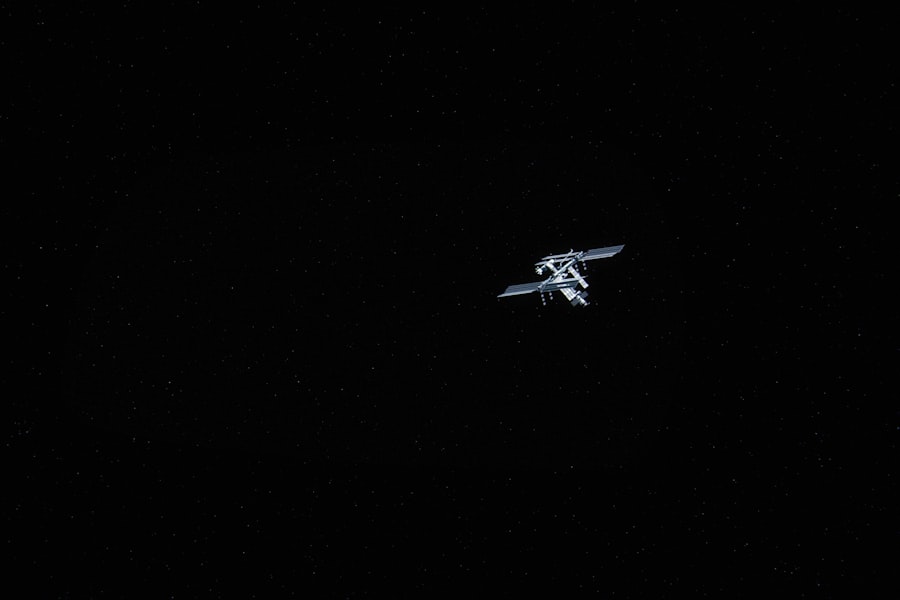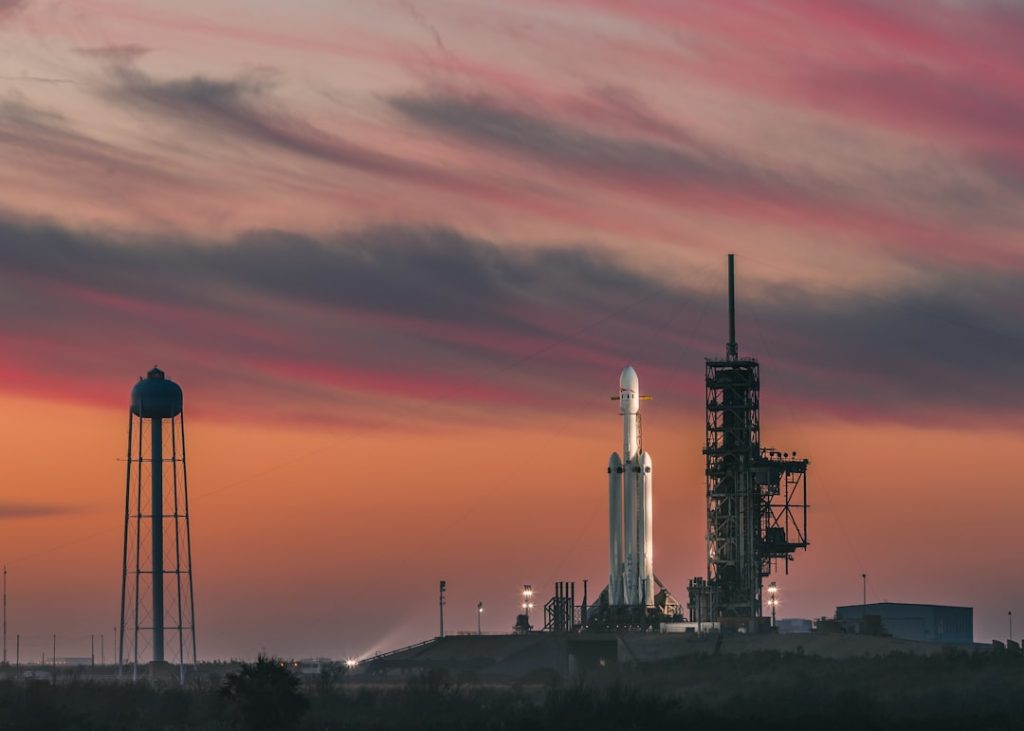The National Space Station (NSS) stands as a monumental achievement in human engineering and international cooperation, orbiting Earth at an altitude of approximately 400 kilometers. This remarkable structure serves as a microgravity laboratory, a platform for scientific research, and a testament to human ingenuity. The NSS is not merely a collection of modules and equipment; it embodies the collaborative spirit of nations working together to push the boundaries of what is possible in space exploration.
As astronauts float within its walls, they conduct experiments that could lead to breakthroughs in medicine, technology, and our understanding of the universe. The NSS is often described as a “city in space,” housing a diverse crew of scientists, engineers, and researchers from various countries. It operates as a unique environment where the laws of physics behave differently than on Earth, allowing for experiments that would be impossible under normal gravitational conditions.
The station’s design incorporates advanced technology and sustainable systems, making it a self-sufficient habitat for long-duration missions. As we delve deeper into the history, purpose, and future of the NSS, we uncover the intricate tapestry of human ambition and scientific inquiry that defines this extraordinary facility.
Key Takeaways
- The National Space Station is a habitable artificial satellite that orbits the Earth and serves as a space environment research laboratory.
- The National Space Station was launched in 1998 and is a collaborative effort between NASA, Roscosmos, JAXA, ESA, and CSA, with the purpose of conducting scientific research and experiments in microgravity.
- Astronauts living on the National Space Station experience unique challenges such as muscle atrophy and bone density loss, and must adapt to a strict schedule of work, exercise, and leisure time.
- Scientific research and experiments on the National Space Station focus on a wide range of fields including biology, physics, astronomy, and materials science, taking advantage of the unique microgravity environment.
- The International Space Station represents a successful example of international collaboration in space exploration, with astronauts from different countries working together on scientific research and maintaining the station.
History and Purpose of the National Space Station
The history of the National Space Station is a narrative woven with ambition, collaboration, and technological advancement. The concept of a space station dates back to the early days of space exploration in the 1960s when NASA began to envision a permanent human presence in low Earth orbit. The first significant step towards this vision was the Skylab program, which launched in 1973.
However, it was not until the 1990s that the groundwork for the NSS as we know it today was laid. The station’s construction began in 1998 with the launch of its first module, Zarya, marking the beginning of an ambitious international project involving multiple space agencies. The primary purpose of the NSS is to serve as a research laboratory where scientists can conduct experiments in a microgravity environment.
This unique setting allows researchers to study phenomena that cannot be replicated on Earth, leading to advancements in various fields such as biology, physics, and materials science. Additionally, the NSS plays a crucial role in preparing for future deep-space missions, including potential manned missions to Mars. By studying the effects of long-term space habitation on the human body and developing life-support systems, the NSS is paving the way for humanity’s next giant leap into the cosmos.
Life on the National Space Station

Life aboard the National Space Station is a fascinating blend of routine and extraordinary experiences. Astronauts live and work in a confined space where every aspect of their daily lives is meticulously planned and executed. The station is equipped with sleeping quarters, a galley for preparing meals, and workstations for conducting experiments.
Astronauts typically follow a schedule that includes time for research, exercise, and leisure activities. Exercise is particularly important in microgravity to counteract muscle atrophy and bone density loss; astronauts spend about two hours each day on specialized equipment designed for use in space. The experience of living in microgravity profoundly alters everyday activities.
Simple tasks such as eating or drinking become unique challenges; food must be specially packaged to prevent crumbs from floating away, and liquids are consumed from pouches with straws. Personal hygiene routines are also adapted; astronauts use rinseless wipes instead of traditional showers and must carefully manage their waste using vacuum toilets. Despite these challenges, astronauts often express a sense of wonder at their surroundings.
The breathtaking views of Earth from the station’s windows provide a constant reminder of their extraordinary environment and mission.
Scientific Research and Experiments on the National Space Station
| Year | Number of Experiments Conducted | Research Areas | Findings |
|---|---|---|---|
| 2015 | 400 | Biological Sciences, Physical Sciences, Earth and Space Sciences | Microgravity effects on cell growth, protein crystallization, and material properties |
| 2016 | 450 | Life Sciences, Material Sciences, Astrophysics | Study of bone density loss, development of new materials, and observation of cosmic phenomena |
| 2017 | 500 | Biotechnology, Microgravity Research, Astronomy | Experiments on tissue engineering, fluid behavior in space, and study of celestial bodies |
The National Space Station serves as an unparalleled platform for scientific research across multiple disciplines. With its unique microgravity environment, researchers can conduct experiments that would be impossible on Earth. For instance, studies on protein crystallization have shown that proteins can form larger and more well-ordered crystals in microgravity than they do under terrestrial conditions.
This has significant implications for drug development and understanding diseases at a molecular level. In addition to biological research, the NSS facilitates experiments in fluid dynamics, combustion, and materials science. One notable experiment involved studying how flames behave in microgravity; researchers found that flames burn differently without gravity’s influence, leading to insights that could improve fire safety on Earth and inform combustion processes in space vehicles.
Furthermore, the station has been instrumental in advancing our understanding of fundamental physics through experiments that test theories such as Einstein’s relativity. Each experiment conducted aboard the NSS contributes to a growing body of knowledge that has both immediate applications and long-term implications for humanity.
International Collaboration on the National Space Station
The National Space Station is a shining example of international collaboration in space exploration. It is jointly operated by five space agencies: NASA (United States), Roscosmos (Russia), ESA (European Space Agency), JAXA (Japan), and CSA (Canadian Space Agency). This partnership has brought together scientists and engineers from around the world to work towards common goals in research and exploration.
The collaborative nature of the NSS has fostered goodwill among nations and has demonstrated that when it comes to exploring space, cooperation can yield far greater results than competition. Each partner agency contributes unique capabilities and resources to the station’s operation. For example, NASA provides much of the station’s infrastructure and scientific expertise, while Roscosmos has been instrumental in launching crewed missions to the station using its Soyuz spacecraft.
ESA has contributed modules such as Columbus, which houses advanced research facilities, while JAXA’s Kibo module offers additional laboratory space and capabilities for conducting experiments. The Canadian Space Agency’s Canadarm2 robotic system plays a critical role in maintaining and servicing the station. This intricate web of collaboration not only enhances scientific output but also strengthens diplomatic ties among participating nations.
Challenges and Risks of Space Exploration

Despite its many successes, space exploration is fraught with challenges and risks that must be carefully managed. The harsh environment of space presents numerous hazards to both equipment and crew members. For instance, exposure to cosmic radiation poses significant health risks for astronauts on long-duration missions.
Prolonged exposure can increase the likelihood of cancer and other health issues; thus, understanding radiation effects is crucial for future missions beyond low Earth orbit. Additionally, technical failures can have dire consequences aboard the NSS. The station relies on complex systems for life support, power generation, and communication; any malfunction could jeopardize crew safety or mission objectives.
The tragic loss of the Space Shuttle Columbia in 2003 serves as a stark reminder of the inherent dangers associated with human spaceflight. Continuous training, rigorous safety protocols, and ongoing research into mitigating these risks are essential components of maintaining crew safety aboard the NSS.
Future of the National Space Station
As we look towards the future, the National Space Station is poised to evolve significantly over the coming years. While it has been an invaluable asset for scientific research and international collaboration since its inception, discussions are underway regarding its eventual decommissioning or transition to commercial operations. NASA has indicated plans to extend its operational life until at least 2028, but there are ongoing debates about what will happen after that point.
One potential future involves transitioning parts of the NSS into commercial hands, allowing private companies to utilize its facilities for research and development purposes. This shift could stimulate innovation in space technology while reducing costs for government agencies. Additionally, new space stations may emerge as private entities seek to capitalize on low Earth orbit’s potential for tourism and research opportunities.
As humanity continues to explore beyond our planet, the legacy of the NSS will undoubtedly influence future endeavors in space exploration.
How to Visit the National Space Station
Visiting the National Space Station is no longer solely reserved for professional astronauts; advancements in commercial spaceflight are opening doors for private individuals to experience life in orbit. Companies like SpaceX and Blue Origin are pioneering efforts to make space travel accessible to civilians through suborbital flights or missions to low Earth orbit destinations like the NSS. For those interested in visiting the NSS specifically, opportunities are becoming increasingly available through private astronaut programs offered by companies such as Axiom Space or Space Adventures.
These programs allow civilians to train alongside professional astronauts before embarking on missions to the station. Participants undergo rigorous training that includes simulations of life aboard the NSS, safety protocols, and physical conditioning to prepare for the unique challenges of living in microgravity. While visiting the NSS remains an expensive endeavor—costing millions of dollars—these developments signal a new era in space exploration where individuals can experience firsthand what it means to live and work aboard humanity’s most significant achievement in orbit.
As commercial space travel continues to evolve, it is likely that more people will have the opportunity to witness the wonders of our planet from above while contributing to ongoing scientific research aboard this remarkable facility.


